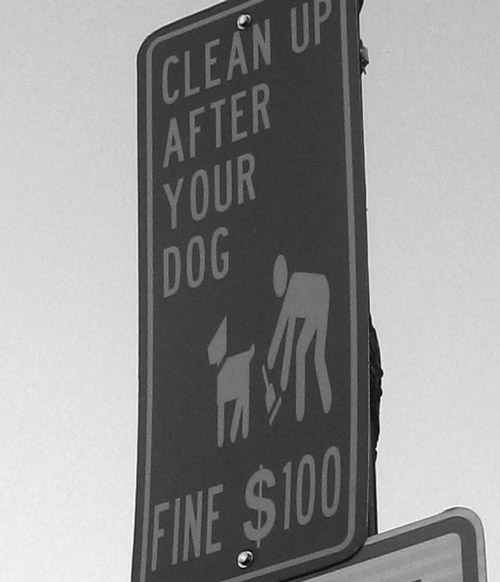 In modern society, we are fortunate enough to be surrounded by refined, highly organized cleaning operations that do an astonishing job at keeping our street and sidewalks clear of refuse despite our ever growing population. That is why when we see the occasional dog turd, we are disappointed, almost angry that such a filthy thing could be laying in an otherwise tidy neighborhood. But the amount that we scoopers have to pick up a daily basis is nothing compared to what the original pooper scoopers had to deal with back in the day. Today we are paying homage to the brave pooper scoopers that trekked those daunting streets of New York City back in the 1800’s.
In modern society, we are fortunate enough to be surrounded by refined, highly organized cleaning operations that do an astonishing job at keeping our street and sidewalks clear of refuse despite our ever growing population. That is why when we see the occasional dog turd, we are disappointed, almost angry that such a filthy thing could be laying in an otherwise tidy neighborhood. But the amount that we scoopers have to pick up a daily basis is nothing compared to what the original pooper scoopers had to deal with back in the day. Today we are paying homage to the brave pooper scoopers that trekked those daunting streets of New York City back in the 1800’s.
New York was growing fast, VERY FAST. The city would start as a population of a mere 60,000 in 1800 to a shocking 1.5 million by 1890. With the rapid population increase, means of transportation increased – and back then, that meant horses. Horses are what kept cities bustling – serving as taxis, buses, and means of transportation of all goods.

By the late nineteenth century, more than 150,000 horses would be on the streets of New York City at any given time, and each one of these sizable creatures would produce an average of 20 lbs of manure day – that’s over 3 million pounds within 24 hours just within the city grid! (not to mention an extra 40,000 gallons of urine on a daily basis)

An appropriate word to describe the amount of manure on the ground would be omnipresent. It was simply everywhere and almost impossible to avoid. It wasn’t uncommon to find it on the bottom of your shoes, and woman would find their dresses becoming soiled as they walked down the streets. People were many times be shin-high (or sometimes even knee-high) in the cities’s debris that was an unsightly mix of feces, rotten food, and general rubbish that was littering the roadways. Wet weather turned the streets into muddy while dry days turned the debris to dust, allowing the wind to carry it up into people’s lungs. Not only would you cover your nose from the overbearing smell, but your mouth as well.

America saw the manure an opportunity for a successful business trade. Farmers, wanting the dung to use as rich fertilizer for their crops, would pay people known as “dirt carters” to have the manure carted away. But not before long, carting it away on a daily basis became too expensive he manure was piling up faster than it could be disposed of. Soon, vacant lots within the city would serve as dumping grounds. There pounds and pounds of feces kept piling up, sometimes up to an astonishing 40-60 feet tall!
In 1894, the Times of London estimated that by 1950 every street in the city would be buried nine feet deep in horse manure. One New York prognosticator of the 1890s concluded that by 1930 the horse droppings would rise to Manhattan’s third-story windows.
Besides the fear of having to eventually swim in filth to get around, the fear of the catching a disease that stemmed from the infectious waste was all too real – mass reports of cholera, smallpox, yellow fever, and typhoid were just to name a few. The uncontained filth led up to The Great Epizootic Epidemic of 1872, killing approximately five percent of the urban horses in the Northeast while debilitating many others. Needless to say it was a scary place for anyone living there. .

It was during the 19th century that several important organizations formed to help combat the issue. In 1865, the New York Sanitary and Chemical Compost Manufacturing Company was established, then the Department of Sanitation in 1881.

At long last, motorized vehicles entered the states in 1900 with a total of 4,192 cars entering the streets. Americans quickly realized the car would solve their horse poop problems and that number rose to 356,000 by 1912, far outnumbering the number of horses within city limits. What almost became the city that was buried in poop, became the revolutionized (and very walkable) city that we know today. Phew.

 How the Dog Became the First Domesticated Animal
How the Dog Became the First Domesticated Animal Introducing The Pooper Scooper Law (Health Code 1310)
Introducing The Pooper Scooper Law (Health Code 1310)